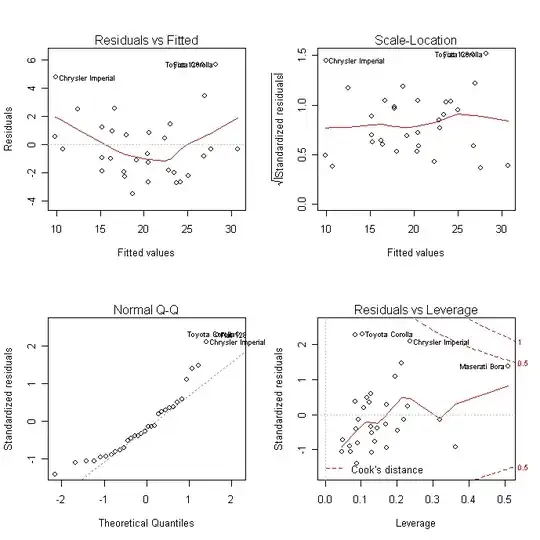If I plot the diagnostic plots to an R regression, a couple of them have "Standardized Residuals" as their y-axis such as in this plot:

What are the residuals standardized over? That is, let us assume that in my model, there are 100 predicted values; hence 100 residuals.
- Standardized residual $e_i$ is defined as $(e_i - \bar e)/s_e$(realized residual - mean of all 100 realized residuals)/(standard deviation of all 100 realized residuals)?
- Since each residual $e_i$ is itself a realized value out of a distribution of possible realizations for this single residual $e_i$, is this residual $e_i$ normalized by its own mean $\bar e_i$ and variance $\text{Var}(e_i)$ (as opposed to the mean and variance from all other values 1 to 100 as described above)?
I tried finding documentation clarifying this distinction but could not find any that was beyond doubt.